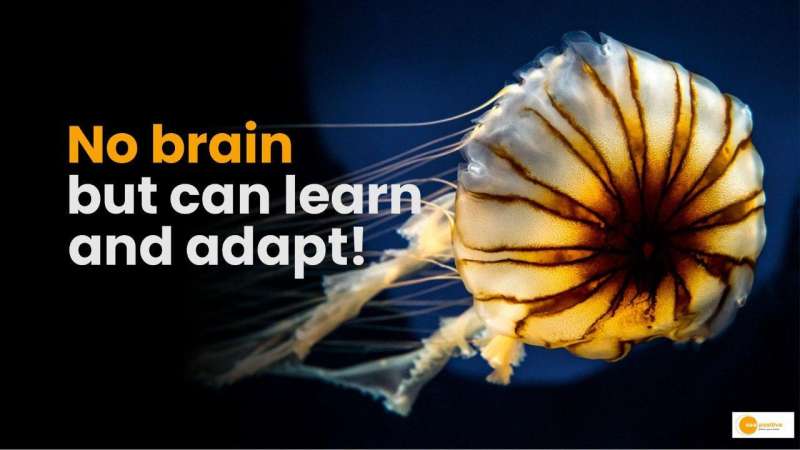Jellyfish, those mysterious creatures of the ocean, have amazed scientists with their ability to learn from their experiences.
In a groundbreaking report published in the journal Current Biology, researchers have shown that Caribbean box jellyfish can learn and adapt, even though they don’t have a central brain.
This discovery challenges what we thought we knew about learning and memory in the animal kingdom and gives us valuable insights into the evolution of these abilities.
Jellyfish might not have brains like ours, but they have shown us that even the simplest nervous systems can perform advanced learning.
Unbelievable Jellyfish Brain
Jellyfish are not known for their smarts, but they have a unique visual system with 24 eyes. These eyes help them navigate through murky waters and avoid obstacles, like tree roots, as they search for prey.
Despite their simplicity, jellyfish can learn through a process called associative learning, where they connect what they see with how they behave.
Learning in Action
To study how jellyfish learn, scientists set up a special tank that mimicked the jellyfish’s natural habitat.
Gray stripes represented distant mangrove roots, and the jellyfish had to learn to avoid them.
At first, they kept bumping into the gray stripes, but as time went on, they got better. They increased their distance from the tank’s walls, avoided collisions more often, and touched the walls less.
Importance of Simple Nervous Systems
Anders Garm, the senior author of the study, pointed out that studying creatures with simple nervous systems, like jellyfish, can help us understand complex behaviors.
By looking at the details of how jellyfish learn, we can learn more about how brains and behaviors evolve.
Role of Rhopalia
Jellyfish have special sensory centers called rhopalia, which house six eyes each. These centers control the jellyfish’s pulsating motion, which helps them move around obstacles.
In an intriguing experiment, researchers exposed the rhopalia to moving gray bars, mimicking the jellyfish’s approach to objects.
The rhopalia learned to dodge obstacles when they were paired with electric stimulation, similar to what happens during a collision.
This showed that combining visual and mechanical stimuli is crucial for jellyfish learning, and the rhopalia play a key role.
What’s Next
The research team plans to dive deeper into the jellyfish’s nervous system to understand how memories are formed.
They also want to uncover more about the mechanical sensors in the jellyfish’s bell. By doing so, they hope to paint a complete picture of how these amazing creatures learn and adapt.
This discovery hints at a fundamental cellular mechanism that might have existed since the early days of the evolution of the nervous system.
So, the next time you spot a jellyfish in the ocean, remember that beneath their serene appearance, they might be learning from their watery world.


